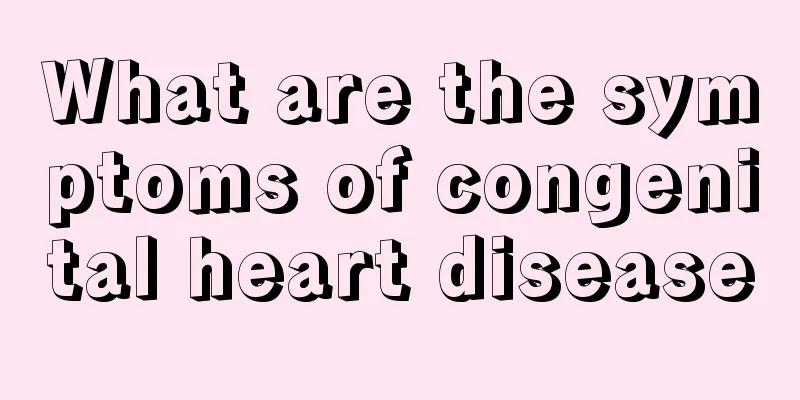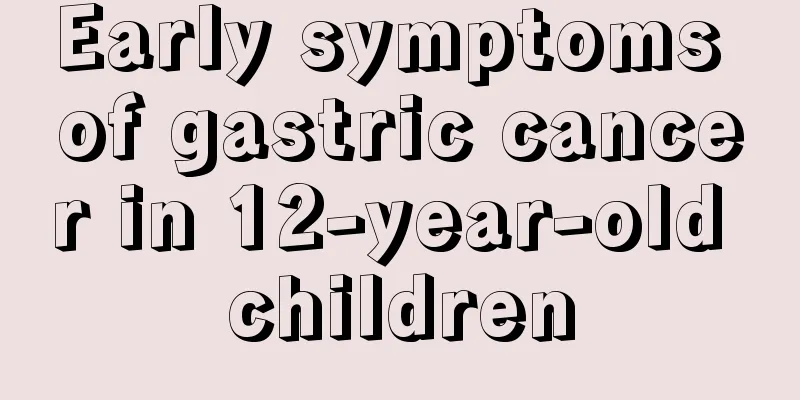What are the symptoms of congenital heart disease

|
Congenital heart disease is also known as congenital heart disease. It is a disease caused by multiple factors during the fetal period. When the patient is in a mild state, there are no symptoms and it will only be discovered during a physical examination. Generally, symptoms of this disease will appear in infancy. As the age increases, the symptoms will become more serious, which will cause serious consequences for the patient. Symptoms of congenital heart disease include: 1. Heart failure: Chest tightness, precordial pain, and palpitations are more obvious, especially after activities. The children are pale, short of breath, have difficulty breathing and tachycardia. The heart rate can reach 160-190 beats per minute and the blood pressure is often low. You can hear the rhythm of galloping horses. 2. Cyanosis: Purple coloration of the skin and mucous membranes can be seen at the tip of the nose, lips, nail beds, conjunctiva, etc. 3. Developmental delay and mental retardation: When cyanosis appears, the child will have slow growth and development, low intelligence, and may have difficulty breathing when feeding or crying. In severe cases, the child may lose consciousness and have convulsions. 4. Clubbing and polycythemia: Chronic hypoxia, metabolic disorders, and toxic injuries at the extremities. The soft tissue at the ends of fingers or toes proliferates, thickens, and becomes clubbed, and the nails are excessively curved in both vertical and horizontal dimensions like a parrot's beak. This is caused by chronic hypoxia. 5. Squatting: When infants and young children are held, their legs do not straighten, but prefer to bend them on the adult's abdomen. When they sit, they like to lift their feet onto a stool, and when they stand, their lower limbs remain bent. When older children walk, they often feel a lack of oxygen to the brain, so they squat down with their knees close to their chest to rest for a while. This is medically known as the squat phenomenon. 6. Others: Chest pain, syncope, sudden death. Some people have symptoms related to systemic circulation, such as abnormal sweating, which far exceeds the normal amount. |
<<: What are the methods for regulating symptoms of low blood sugar?
>>: How to treat headache and insomnia
Recommend
Diagnostic methods for bone tumors
There is generally no obvious functional impairme...
Is liver cancer hereditary?
Is liver cancer hereditary? The causes of cancer ...
Do you need to take vitamins for fitness
Fitness can not only make the body's appearan...
Why are my hands and feet so hot?
Patients with different physical conditions will ...
How to treat hepatic duct stones better
The treatment of patients with bile duct stones n...
Is anxiety disorder easy to treat? How to treat it
With the development of society, people are facin...
Causes of Big Calf
Many women are reluctant to wear beautiful and co...
What should lung cancer patients pay attention to in their diet? Some dietary taboos that lung cancer patients must know
Lung cancer patients need to pay attention to ade...
I have a cold and my urine is very yellow
As a complete body system, all the organs in our ...
Which butt shape is good looking?
People often use "protruding front and curve...
Pain when pressing on the left side of your Adam's apple?
If you feel pain when pressing the left side of y...
Does the pain in the middle back spine have anything to do with the lungs?
Pain in the middle spine of the back may be relat...
What are the causes of thyroid cancer? These 4 points are the main causes of thyroid cancer
One of the causes of thyroid cancer is heredity. ...
Does bladder cancer cause pain?
The incidence of malignant tumors such as bladder...
The difference between being brainless and being simple
In life, we often hear people say that someone is...









